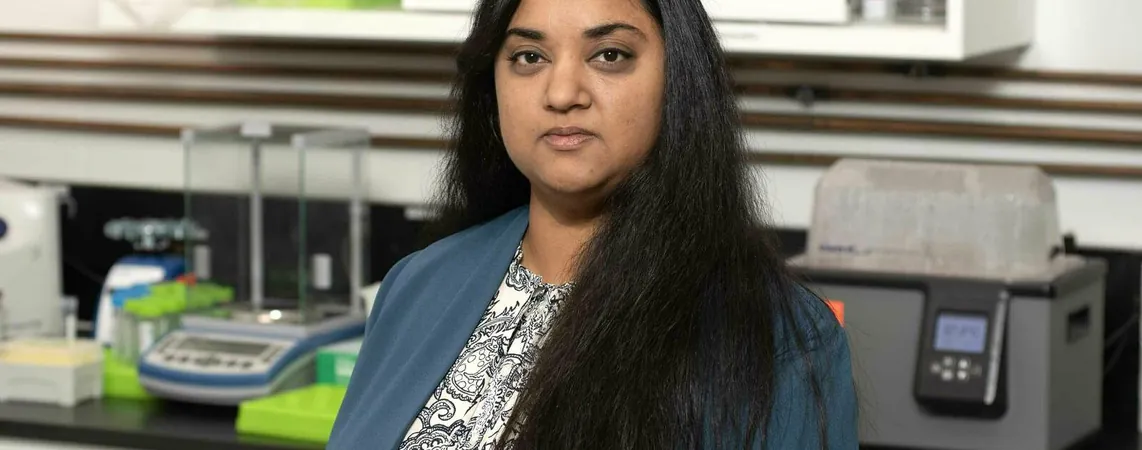
Unlocking Brain Tumor Growth: A New Approach to Patient Care
2025-07-02
Author: Wei Ling
As brain tumors expand, they face a critical choice: either push against the surrounding brain tissue or employ invasive, finger-like extensions to destroy healthy cells. These growth strategies can reveal significant insights into the tumor's behavior and potential impact on patient care.
Researchers from the University of Notre Dame, Harvard Medical School, and Boston University have developed a groundbreaking technique for measuring the mechanical forces exerted by brain tumors. Published in the journal Clinical Cancer Research, their study sheds light on how this information can be integrated into surgical practices to enhance patient management.
A Game-Changer in Surgical Procedures
During surgical removal of a brain tumor, neurosurgeons often send tumor samples to pathologists for immediate analysis. This crucial step determines the treatment trajectory, especially distinguishing between primary brain tumors like glioblastoma and metastatic tumors that have spread from other organs. According to Meenal Datta, assistant professor at Notre Dame and co-lead author of the study, adding just two minutes to the surgical process can help determine tumor types based solely on mechanical properties.
The Power of Data Collection
The research team analyzed preoperative MRI data and intraoperative findings from 30 patients. Using the advanced Brainlab neuronavigation technology, which visualizes real-time 3D brain images for surgeons, they could assess the impact of tumor-induced mechanical forces on brain swelling.
The findings were striking: higher mechanical force correlated with significant brain swelling, while tumors that destructively invaded surrounding tissue showed less swelling. This distinction is crucial for understanding tumor behavior and guiding treatment.
Revolutionizing Treatment Strategies
By creating computational models based on their findings, the researchers provided a systematic approach for doctors to quantify brain bulges and mechanical forces. Understanding these forces not only assists surgeons in making informed decisions during surgeries but also opens doors for improved symptom management post-surgery.
Datta emphasizes the clinical significance: "Knowing how much mechanical force a tumor exerts can guide treatment choices, such as the administration of steroids to reduce swelling or even commonly used blood pressure medications to counteract neurological symptoms. We believe these insights could predict responses to chemotherapy and immunotherapy, enhancing patient care further."
Next Steps in Research
To explore the implications of mechanical forces even further, the team conducted animal modeling for three types of brain tumors: breast cancer metastases, glioblastoma, and childhood ependymoma. Their findings indicated that mechanical force can serve as an earlier and more sensitive indicator of chemotherapy effectiveness, often changing before detectable alterations in tumor size.
This emerging research underscores the potential of mechanical force as a universal metric in tumor assessment, offering new pathways to improve patient outcomes.
The Future of Cancer Treatment
As the study opens new avenues in understanding tumor mechanics, Datta and her colleagues encourage clinicians to integrate these innovative models into their practices. By bridging the gap between engineering and medicine, this research could reshape how brain tumors are diagnosed and managed, marking a significant step forward in cancer care.
With continued support from the National Institutes of Health and various cancer research foundations, this transformative approach stands poised to revolutionize patient care in the fight against brain tumors.



 Brasil (PT)
Brasil (PT)
 Canada (EN)
Canada (EN)
 Chile (ES)
Chile (ES)
 Česko (CS)
Česko (CS)
 대한민국 (KO)
대한민국 (KO)
 España (ES)
España (ES)
 France (FR)
France (FR)
 Hong Kong (EN)
Hong Kong (EN)
 Italia (IT)
Italia (IT)
 日本 (JA)
日本 (JA)
 Magyarország (HU)
Magyarország (HU)
 Norge (NO)
Norge (NO)
 Polska (PL)
Polska (PL)
 Schweiz (DE)
Schweiz (DE)
 Singapore (EN)
Singapore (EN)
 Sverige (SV)
Sverige (SV)
 Suomi (FI)
Suomi (FI)
 Türkiye (TR)
Türkiye (TR)
 الإمارات العربية المتحدة (AR)
الإمارات العربية المتحدة (AR)